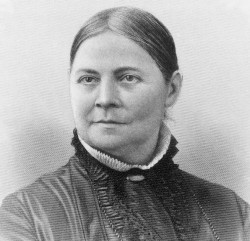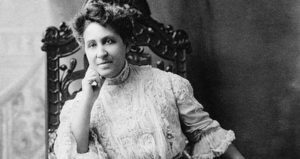This year for Women’s History Month, we are highlighting different women each week who, although you may have not heard of previously, have contributed greatly to society.
Second to be highlighted is Lucy Stone, a leading suffragist, abolitionist, and vocal advocate promoting women’s rights. She studied school at Oberlin College and was the first Massachusetts woman to earn a bachelor’s degree in 1847.

At her wedding ceremony in 1855, she read a ‘marriage protest,’ signed by her and her husband, Harry Blackwell. The protest denounced the legal portions of a marriage in which a woman became subservient to and property of her husband. She was the first American women to keep her last name when she was married.
In the1869 anniversary celebration of the Equal Rights Association, Stone quoted, “I believe that the influence of women will save the country before every other power.”
When Equal Rights Association refused to give women voting rights, the National American Woman Suffrage Association (NAWSA) was formed by two rival women’s suffrage organizations in1890. The NAWSA represented millions of women to protest at state level, believing that state-by-state support would force the federal government to pass the amendment.
While she stood for women’s rights, she was also an abolitionist in support of the 15th Amendment, earning African American men the right to vote.
In 1893, Stone passed away before the ratification of the 19th Amendment, granting women the right to vote. Her endless efforts paved the way for her daughter and future generations of women to earn the rights they willingly deserve. On her last day, she said, “I am glad I was born, and that at a time when the world needed the service I could give.”
Another noteworthy figure of the time, Mary Church Terrell, was a women’s suffragist and civil rights activist.

Terrell was one of the first African American women to earn a degree at Oberlin College in Ohio. She continued her education to earn a master’s degree in 1888. After college, she became a teacher in Washington D.C. and the first African American woman appointed to the school board of a major city.
In 1896, she became the president of the National Association of Colored Women. Her work focused on the notion of racial uplift, a belief that blacks would end racial discrimination by advancing themselves and other members of the race through education, work, and community activism. Her words, “Lifting as we climb” became the organization’s motto.
Terrell fought for civil rights and women’s suffrage because she belonged to “the only group in this country that has two such huge obstacles to surmount… sex and race.”
She was a charter member for the National Association for the Advancement of Colored People (NAACP) – the largest American civil rights organization established in 1909.
After the 19th Amendment was passed and women were granted the right to vote, Terrell focused on a broader spectrum of civil rights. In 1940, she published her autobiography, A Colored Woman in a White World, highlighting her experiences with discrimination.
In 1948, she became the first black member of the African Association of University Women after winning an anti-discrimination lawsuit. In 1950, she challenged segregation in public places by protesting a restaurant in D.C. In 1953, The United States Supreme Court ruled segregated eating facilities as unconstitutional and she claimed her victory. This rule was groundbreaking in the civil rights movement.
Terrell fought tirelessly to bring racial justice and equality for all African Americans up until her death in 1954.
Sources:
• Top 10 Women’s Suffrage Activists (thoughtco.com)
• Marriage Protest:Lucy Stone and Henry Blackwell, 1855 (thoughtco.com)
• Lucy Stone | anna brones
• The National American Woman Suffrage Association (brynmawr.edu)
• 5 Essential Black Figures In The Women’s Suffrage Movement (wgbh.org)
• Mary Church Terrell | National Women’s History Museum (womenshistory.org)
• NAACP – HISTORY
